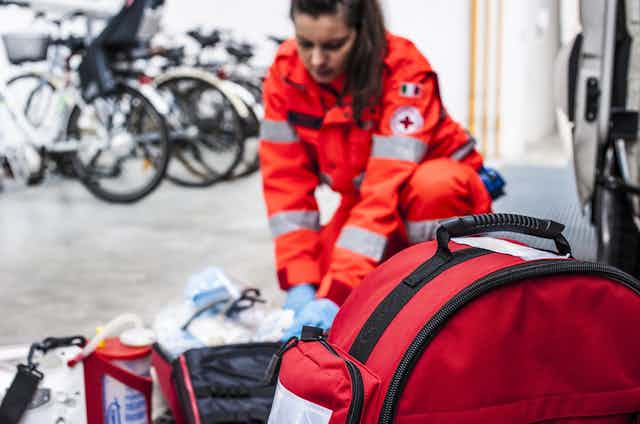The Grenfell Tower fire and recent terrorist attacks in Manchester and London have put the spotlight on spending cuts for emergency services.
In Manchester, an independent review into the emergency response was ordered in the aftermath of the bombing to look into the “the strain of spending cuts” on police. The city mayor is also investigating the fire service after crews were apparentley “held back” from helping the victims.
Whatever the outcome of these investigations – and others like them – I believe the problems go far beyond staff numbers and resources. The only way forward is to engage in a full system “reboot” to get better results.
The problems are legion. For starters, the emergency services are far too fragmented. There are huge differences across the emergency services when it comes to size, funding and organisational structures with no overarching body for coordination.
Disconnected ministerial oversight also creates uneven and localised outcomes in performance. And the government’s approach to the problem is vague and unclear. The Policing and Crime Act 2017 has brought important changes to the governance of the police and fire and rescue services – but ambulance services remain independent of these provisions. It places a duty on police, fire and ambulance services to work together which currently remains undefined.
Ambulance demand is growing at an annual rate of about 5.2%. Managing such levels of demand and maintaining the quality of patient care is unsustainable and it is no secret that ambulance services across the country are struggling to meet their performance targets. The police are witnessing a reduction in recorded crime but are increasingly dealing with cases relating to cybercrime, child and sexual exploitation and mental illness. Meanwhile fire services have seen a massive reduction in fire call-outs. But these organisations continue to be performance-managed and target-driven – and current models of service delivery do not reflect these changes.
The focus for the emergency services remains on performance metrics and stringent target regimes. Alongside this is the influence that staff associations and unions have on determining the scale and pace of reforms. Workforce issues such as stress remain largely neglected and recruitment and retention of black, Muslim and ethnic minorities (BME) continues to be a challenge.
Issues around Post-Traumatic Stress Disorder (PTSD) and other illness – which are common among emergency workers – are not being fully addressed and ambulance staff sickness is highest within the NHS. Media reports also increasingly highlight cases of harassment and bullying within the emergency services.

There are no easy fixes for all these problems but emergency services do need a “road map” to help them navigate the shifting political landscape and the changes to training and performance regimes. Here are five ways to improve the emergency services and better equip them for the future.
Leadership reform
There needs to be a move from isolated chiefs calling all the shots to a more collaborative culture. This is because front-line staff and managers should have confidence in their own leadership and decision-making skills while dealing with other 999 services during major incidents and during interactions with the public.
Promote collaboration
A top-down bureaucratic approach to force the merger of police and fire services is unlikely to work and should be abandoned if it proves costly and does not bring results. Proposals for merger and reorganisation of the fire services need to be reconsidered, along with the feasibility of a national or regionally organised police force like in Scotland. Further reforms should allow pooling organisational and management oversight.
Similarly, the role of the ambulance services within the emergency architecture should be spelt out more clearly, since they derive their funding from the National Health Service budget. They work more as the emergency arm of the health services rather than the health arm of the emergency services.
Adapt to changing demands
There is a clear need to understand how usage is changing – and to support staff to respond to new challenges. This will help to improve workforce motivation and reduce the cost of ill health by building a “resilient” organisational culture.
Academic partnerships
Developing partnerships with academia will be useful in building modern and professional organisations and to further improve the research base in the “Blue Light” services.
New management skills
Addressing staff morale and retention and setting performance criteria that make sense will be central to improving the services. The obsession with a target-chasing culture should give way to broader sets of measures to reflect the new challenges and changing organisational realities. We need a new set of collaborative leadership and management skills to inspire a shared purpose across a network of organisations to respond quickly to current and future problems.

This is an important moment for the emergency services. The steady rise in the 999 demand along with shrinking budgets are seen by many as two of the key challenges which are unlikely to go away in the near future. There is an urgent need to restart Britain’s limping emergency services and bring about real “transformational” change. But it requires determination, imagination and leadership – or the 999 services will be facing their own emergency situation.

